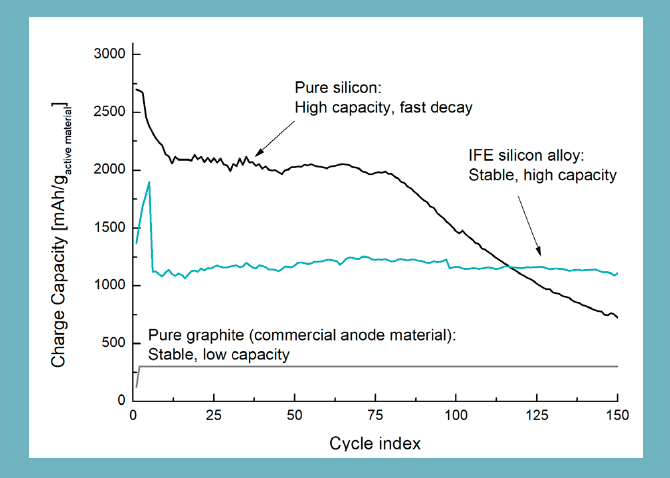For years, scientists have seen silicon as a hugely promising material in the world of lithium-ion batteries. The primary reason for this is that using it as the anode could mean batteries with 10 times the capacity of current versions – at least in theory. But in reality, it easily breaks apart as the battery goes through its charging cycles. Scientists at Norway's Institute for Energy Technology are now claiming to have overcome this problem with a new material they call SiliconX.
The researchers describe the new material as the "x factor" they've been looking for, and that is no small claim. For years, scientists around the world have been trying to work out how to stabilize relatively fragile silicon as a battery anode, the electrode through which the electrical current flows into the battery.
And we've seen many experimental technologies show big promise in the lab. Some of the more interesting approaches include putting silicon inside a graphene cage, crushing it into a powder, using it as nanowires measuring a few microns in length, and deploying it in nanoparticle form.
The problem with using regular silicon as an anode is that the particles expand by as much as 400 percent as the battery charges, and then return to normal as it discharges, which causes them to rupture. The scientists at the Institute for Energy Technology say they have overcome this problem with a new silicon alloy that uses a careful mix of silicon nanoparticles and an unnamed material, with work underway to patent the technology.
The team has carried out testing in the lab and says, although the new battery design compromises initially on capacity, its stability throughout charging cycles means that it winds up with far better capacity than a fast-degrading pure silicon anode, and three to five times the charge capacity of the graphite anodes used in today's batteries.

If these kinds of results can be reproduced beyond the lab, it could one day make for mobile phones that only need to be charged twice a week, or electric vehicles that can be driven more than a thousand miles on a single charge. That is still quite a big "if", but the scientists have support from the Research Council of Norway to continue the work and are teaming up with private partners to try and bring SiliconX to market.


